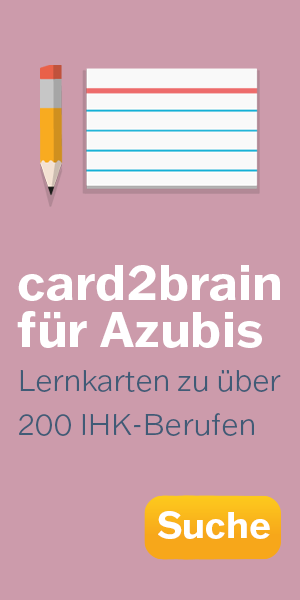CV Chapter 4 Recognition and Categorization
Questions about the lecture 'Computer Vision' of the RWTH Aachen Chapter 4 Recognition and Categorization
Questions about the lecture 'Computer Vision' of the RWTH Aachen Chapter 4 Recognition and Categorization
Kartei Details
| Karten | 35 |
|---|---|
| Sprache | English |
| Kategorie | Informatik |
| Stufe | Universität |
| Erstellt / Aktualisiert | 04.02.2017 / 19.02.2017 |
| Weblink |
https://card2brain.ch/box/20170204_cv_chapter_4_recognition_and_categorization
|
| Einbinden |
<iframe src="https://card2brain.ch/box/20170204_cv_chapter_4_recognition_and_categorization/embed" width="780" height="150" scrolling="no" frameborder="0"></iframe>
|
Lernkarteien erstellen oder kopieren
Mit einem Upgrade kannst du unlimitiert Lernkarteien erstellen oder kopieren und viele Zusatzfunktionen mehr nutzen.
Melde dich an, um alle Karten zu sehen.
What are the characteristics of spatial/orientation binning (step three) of the HOG detector? [2]
1. Localized histograms
2. 8x8 Subdivision with 8 or 9 orientation bins
What are the characteristics of contrast normalization (step four) of the HOG detector? [2]
1. L2 normalization
2. Clipping
What are the computational details for cells and blocks of the HOG detector? [2]
1. Each cell is average of gradient magnitude
2. Each 2x2 block of cells has gaussian weight
What are the computational details for weights of the HOG detector? [6]
1. Weight for top left w*(1-x’)*(1-y’)
2. Weight for bottom left w*(1-x’)*y’
3. Weight for top right w*x’*(1-y’)
4. Weight for bottom right w*x’*y’
5. x’ is x-x_left/x_right-x_left
6. y’ is y-y_top/y_bottom-y_top
What are the GPU times of a HOG detector from Prisacariu and Reid (2009)? [6]
65% Block histogram computation
16% Linear SVM evaluation
12% Grad magnitudes and orientations
3% Block histogram computation
3% Image downscale
2% Others
What are the characteristics of AdaBoost? [2]
1. An implementation of boosting by Freund and Schapire
2. Used for Viola-Jones face detector
What are the characteristics of AdaBoost used for Viola-Jones face detector? [4]
1. Training data with 5K positives and 350M negatives
2. 38 layers
3. 6061 features in last layer
4. Use false positives as hard negatives in training
What is the idea of AdaBoost?
Combine “weak” classifiers (WC)
What are the characteristics of combining WCs? [3]
1. WC have at least 50% accuracy
2. Called cascading
3. First fast and lower false positive WCs // 90%
What are the given values of AdaBoost? [2]
1. Set X with values T and weights W
2. W^1 is 1/N
What is the definition of the AdaBoost algorithm? [3]
1. Add new WC based on current W^m
2. Increase/decrease weight of wrong/correct classified example
3. Combine Wcs H(x)=sign(Sum_m a_m*h_m(x))
How are new WCs added in step 1 of the AdaBoost algorithm? [3]
1. Minimize weighted error function J_m = Sum_n w_n^m*I(h_m(x_n)) // With I(h_m(x_n)) → 1 if h_m chooses false
2. Estimate weighted error eps_m = J_m/Sum_n w_n^m
3. Calculate weighting coefficient a_m = ln(1-eps_m/eps_m)
How are weights increased in step 2 of the AdaBoost algorithm?
w_n^(m+1) = w_n^m*exp(a_m*I(h_m(x_n)))
What is a possible form of the WCs of AdaBoost?
Use best rectangular filters (WC) and minimizing theta
How does rectangular filters for feature extraction work? [2]
1. bw, bwb horizontal or vertical
2. Large library of 180k filters for a 24x24 window
What are the characteristics of appearance-based recognition? [3]
1. 3D object is represented by a set of images (So-called appearances)
2. No 3D model of object needed
3. Feature vector matching with multiple training views for recognition
What are the characteristics of global recognition? [4]
1. 3D object is represented by a global descriptor
2. Match descriptors for recognition
3. Descriptors have built in variations
4. Other variations have to be incorporated by training data
What are the characteristics of gradient-based recognition? [3]
1. Consider edges contours and (oriented) intensity gradients
2. Robust to small shifts and rotations
3. Local histograms offer more spatial information
What is the difference between identification and categorization?
Find a certain object (identification) and find all appearances of a general object (categorization)
What are the components of the sliding window technique? [3]
1. Slide window over space and scale // Cluttered scene
2. Feature extraction learned by training data
3. Binary classifier which returns yes or no
What is the idea behind the sliding window technique?
Brute force
What are possible feature extraction strategies? [3]
1. Color histogram // Sensitive to illumination and intraclass
2. Pixel intensities // Sensitive to small shifts
3. Eigenfaces
What are the characteristics of eigenfaces? [3]
1. Mean of training images
2. Low dimensional representation of mean with linear subspace
3. Compare new image with face space
How is detection done with eigenfaces?
Via distance to eigenspace
How is identification done with eigenfaces?
Via distance in eigenspace
Which discriminative methods exist for binary classifiers? [5]
1. Nearest neighbor
2. Neural networks
3. Boosting
4. Support vector machines (SVMs)
5. Randomized forests
What are the components of a linear support vector machine? [3]
1. Vectors w and x
2. Offset b
3. w^T*x + b = 0
What is the general purpose of a 2D SVM? [2]
1. Hyperplane separates positive and negative examples
2. Find optimal separating hyperplane
What is the procedure of finding the optimal SVM? [2]
1. Maximize margin between positive and negative examples // Margin lies orthogonal on hyperplane
2. Minimize ½*w^T*w
How does a solution for a SVM looks like? [2]
1. w = Sum_n=1^N a_n*t_n*x_n
2. f(x)=Sign(Sum_n=1^N a_n*t_n*x_n^T*x + b)
-
- 1 / 35
-
